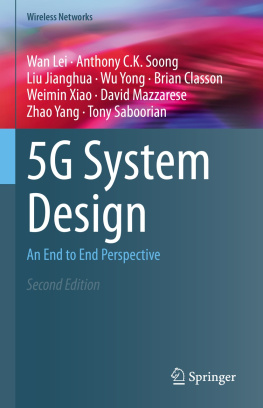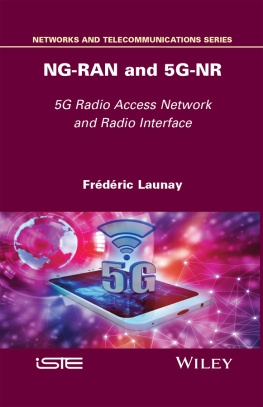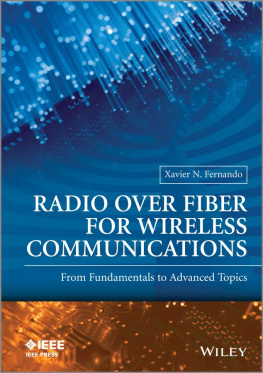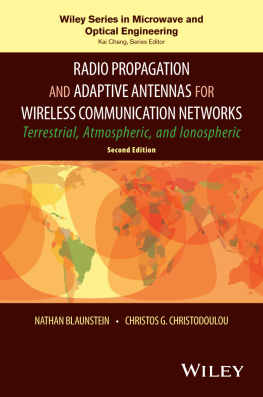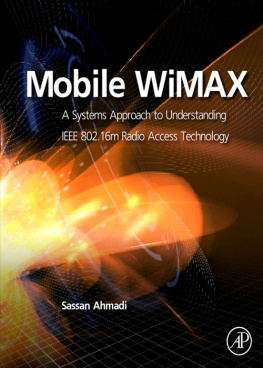3G Evolution
HSPA and LTE for Mobile Broadband
Erik Dahlman
Stefan Parkvall
Johan Skld
Per Beming
Copyright
Copyright 2008 Elsevier Ltd. All rights reserved
Linacre House, Jordan Hill, Oxford, OX2 8DP
30 Corporate Drive, Burlington, MA 01803
First edition 2007
The right of Erik Dahlman, Stefan Parkvall, Johan Skld and Per Beming to be identified as the authors of this work has been asserted in accordance with the Copyright, Designs and Patents Act 1988
No part of this publication may be reproduced, stored in a retrieval system or transmitted in any form or by any means electronic, mechanical, photocopying, recording or otherwise without the prior written permission of the publisher
, and selecting Obtaining permission to use Elsevier material
NOTICE
No responsibility is assumed by the publisher for any injury and/or damage to persons or property as a matter of products liability, negligence or otherwise, or from any use or operation of any methods, products, instructions or ideas contained in the material herein
British Library Cataloguing in Publication Data
3G evolution : HSPA and LTE for mobile broadband.2nd ed.
1. Broadband communication systemsStandards 2. Mobile communication systemsStandards 3. Cellular telephone systemsStandards
I. Dahlman, Erik
621.3'8546
Library of Congress Control Number: 2008931278
ISBN: 978-0-12-374538-5
For information on all Academic Press publications visit our website at elsevierdirect.com
Typeset by Charon Tec Ltd., A Macmillan Company. (www.macmillansolutions.com)
Printed and bound in Great Britain by MPG Books Ltd, Bodmin, Cornwall
08 09 10 11 11 10 9 8 7 6 5 4 3 2 1
Brief Table of Contents
Table of Contents
List of Figures
List of Tables
Preface
During the past years, there has been a quickly rising interest in radio access technologies for providing mobile as well as nomadic and fixed services for voice, video, and data. The difference in design, implementation, and use between telecom and datacom technologies is also getting more blurred. One example is cellular technologies from the telecom world being used for broadband data and wireless LAN from the datacom world being used for voice over IP.
Today, the most widespread radio access technology for mobile communication is digital cellular, with the number of users passing 3 billion by 2007, which is almost half of the world's population. It has emerged from early deployments of an expensive voice service for a few car-borne users, to today's widespread use of third generation mobile-communication devices that provide a range of mobile services and often include camera, MP3 player, and PDA functions. With this widespread use and increasing interest in 3G, a continuing evolution ahead is foreseen.
This book describes the evolution of 3G digital cellular into an advanced broadband mobile access. The focus of this book is on the evolution of the 3G mobile communication as developed in the 3GPP (Third Generation Partnership Project) standardization, looking at the radio access and access network evolution.
This book is divided into five parts. Part I gives the background to 3G and its evolution, looking also at the different standards bodies and organizations involved in the process of defining 3G. It is followed by a discussion of the reasons and driving forces behind the 3G evolution. Part II gives a deeper insight into some of the technologies that are included, or are expected to be included as part of the 3G evolution. Because of its generic nature, Part II can be used as a background not only for the evolution steps taken in 3GPP as described in this book, but also for readers that want to understand the technology behind other systems, such as WiMAX and CDMA2000.
Part III describes the evolution of 3G WCDMA into High Speed Packet Access (HSPA). It gives an overview of the key features of HSPA and its continued evolution in the context of the technologies from Part II. Following this, the different uplink and downlink components are outlined and finally more detailed descriptions of how they work together are given.
Part IV introduces the Long Term Evolution (LTE) and System Architecture Evolution (SAE). As a start, the agreed requirements and objectives for LTE are described. This is followed by an introductory technical overview of LTE, where the most important technology components are introduced, also here, based on the generic technologies given in Part II. As a second step, a more detailed description of the protocol structure is given, with further details on the uplink and downlink transmission schemes and procedures, access procedures and flexible bandwidth operation. The system architecture evolution, applicable to both LTE and HSPA, is given with details of radio access network and core network. The ongoing work on LTE-Advanced is also presented.
Finally in Part V, an assessment is made on the 3G evolution. An evaluation of the performance puts the 3G evolution tracks in relation to the targets set in 3GPP. Through an overview of similar technologies developed in other standards bodies, it will be clear that the technologies adopted for the evolution in 3GPP are implemented in many other systems as well. Finally, looking into the future, it will be seen that the 3G evolution does not stop with the HSPA Evolution and LTE.
Acknowledgements
We thank all our colleagues at Ericsson for assisting in this project by helping with contributions to the book, giving suggestions and comments on the contents, and taking part in the huge team effort of developing HSPA and LTE.
The standardization process for 3G evolution involves people from all parts of the world, and we acknowledge the efforts of our colleagues in the wireless industry in general and in 3GPP RAN in particular. Without their work and contributions to the standardization, this book would not have been possible.
Finally, we are immensely grateful to our families for bearing with us and supporting us during the long process of writing this book.
Part I. Introduction
Chapter 1. Background of 3G Evolution
From the first experiments with radio communication by Guglielmo Marconi in the 1890s, the road to truly mobile radio communication has been quite long. To understand the complex 3G mobile-communication systems of today, it is also important to understand where they came from and how cellular systems have evolved from an expensive technology for a few selected individuals to today's global mobile-communication systems used by almost half of the world's population. Developing mobile technologies has also changed, from being a national or regional concern, to becoming a very complex task undertaken by global standards-developing organizations such as the Third Generation Partnership Project (3GPP) and involving thousands of people.
1.1. History and Background of 3G
The cellular technologies specified by 3GPP are the most widely deployed in the world, with more than 2.6 billion users in 2008. The latest step being studied and developed in 3GPP is an evolution of 3G into an evolved radio access referred to as the Long-Term Evolution (LTE) and an evolved packet access core network in the System Architecture Evolution (SAE). By 20092010, LTE and SAE are expected to be first deployed.
Looking back to when it all it started, it begun several decades ago with early deployments of analog cellular services.




